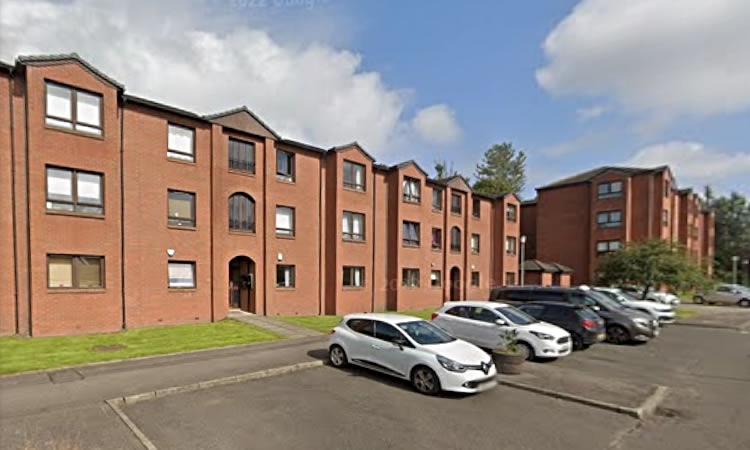Iain Thompson: Remembering the Glasgow developer that pioneered Build to Rent decades before its time

Sandbank Street in Maryhill
Glasgow-born architect and Strathclyde graduate Paul Mugnaioni, who founded Quality Street Ltd in 1987, effectively pioneered the Build to Rent model in the UK years ahead of the current institutional wave, writes Iain Thompson.
When people talk about the rise of Build to Rent (BTR), they usually picture glass towers in city centres, investor-backed apartment blocks, and tenants attracted by on-site gyms and co-working lounges. It’s now a multi-billion-pound part of the UK housing sector — but its origins are rarely discussed.
Long before the phrase Build to Rent entered property vocabulary, a Glasgow-based company quietly put the same principles into practice. The year was 1987, the market was dominated by for-sale housing, and interest rates were climbing towards double digits. Yet one small firm set out to challenge the norm.
That company was Quality Street Ltd, founded in Glasgow and best remembered for its early development on Sandbank Street in Maryhill. While most builders measured success by how fast they could sell their homes, Quality Street did the opposite — it built to hold and rent. At the time, that made it an outlier. In hindsight, it made it a pioneer.
Paul Mugnaioni, the man behind Quality Street, was born in Govan but spent part of his childhood in Italy before returning to Gourock, near Greenock. After studying architecture at the University of Strathclyde, where he graduated with a first, he joined the Greater London Council and later taught at the Architectural Association.
Sponsored by the GLC to complete a master’s in planning economics at University College London, he returned to Glasgow in 1979 to help establish the city’s new housing department. Within two years he became its housing director — then the youngest in Britain — managing what was Europe’s largest housing stock at the time. In 1987, drawing on that experience, he founded Quality Street in partnership with the Nationwide Building Society, backed by a £600 million credit line to fund purpose-built rental housing.
A new approach to renting
The late 1980s were a defining period for British housing. The UK Government’s “Right to Buy” initiative had transformed ownership levels, and developers built primarily for sale to private buyers. Renting was seen as a stopgap — a stage between leaving home and purchasing a first property.
Quality Street’s founders saw things differently. They believed that renting could be aspirational if homes were well-designed, well-managed, and professionally maintained. Instead of selling their developments to owner-occupiers, they retained ownership and built a portfolio of long-term rental stock.
This model — where a single organisation builds, owns, and manages rental housing at scale — didn’t have a label then. Today, it’s the very definition of Build to Rent.
At its height, Quality Street owned or managed around 3,500 homes across Scotland and the wider UK, including sites in and around Glasgow and Edinburgh. The company’s emphasis on professional management, consistent standards, and tenant service set it apart in an era when most landlords were individuals rather than institutions.
The Nationwide partnership
A key part of Quality Street’s growth was its funding partnership with Nationwide Building Society. At a time when few lenders understood how to value rental income, Nationwide recognised that steady yield and occupancy could rival short-term sales margins. It provided both equity and loan support, allowing Quality Street to scale its operations when others were constrained by bank lending.
This collaboration was ahead of its time. The financial structure mirrored what we now recognise as institutional Build to Rent: patient capital, predictable income, and long-term asset value rather than speculative resale profits.
The partnership also demonstrated something that remains crucial for developers today — the importance of alignment between finance and business model. Development loans designed for quick sales rarely suit long-term rental strategies. Nationwide’s involvement showed that a different form of finance could unlock a new kind of housing market.
Lessons for today’s market
Nearly forty years on, Scotland’s Build to Rent market is thriving. Major schemes in Glasgow, Edinburgh, Aberdeen, and Dundee are reshaping how people rent, offering stability and quality that older private rental models often lacked.
Yet the underlying principles remain the same as those Quality Street pursued in the late 1980s:
- Capital alignment matters. Funding must recognise the longer-term income cycle of rental stabilisation, not immediate sales.
- Operational quality drives value. A well-managed building retains tenants, minimises voids, and strengthens returns.
- Scale and flexibility are key. Quality Street proved that Build to Rent doesn’t only work in high-rise city blocks — it can succeed in smaller suburban or community-based developments too.
During the early 1990s downturn, when property values dipped and many developers struggled to sell, Quality Street’s decision to hold and rent its stock gave it resilience. It offered a blueprint for how rental yield could act as a stabilising force during volatile markets — a lesson still relevant amid today’s uncertain economy.
The Scottish connection
Scotland’s Build to Rent sector is now one of the fastest-growing in the UK, with large-scale developments attracting both domestic and overseas investment. But the idea of purpose-built rental housing is not imported — it was born here.
Quality Street’s story reminds us that Scottish innovation often leads national trends. Its Maryhill development wasn’t just bricks and mortar; it was a quiet revolution in housing tenure. The company’s founders believed in the long-term economic and social value of good-quality rental homes — a belief that modern policymakers and institutional investors have since embraced.
It also underscores a financing challenge that persists today: how to bridge short-term development funding into long-term investment capital. Many lenders now offer build-to-hold or lease-up products to help developers stabilise income before refinancing — essentially formalising what Quality Street and Nationwide improvised almost forty years ago.
More than history
Quality Street’s early adoption of a rental-holding model didn’t just prefigure Build to Rent — it legitimised it. By proving that professional management and long-term ownership could coexist with profitability, it gave later institutional investors confidence to enter the sector.
For developers, brokers, and lenders today, the message still resonates: Build for longevity, not speculation. Finance with patience. And treat tenants as long-term customers, not short-term transactions.
A lasting legacy
Build to Rent now accounts for tens of thousands of new homes across the UK. It’s reshaping the rental experience — offering security, consistency, and community. But few realise that one of the sector’s earliest experiments took place in a modest corner of Glasgow.
What started on Sandbank Street in Maryhill in 1987 wasn’t a marketing concept or a financial product. It was a bold idea: that good-quality rental housing could stand proudly alongside ownership, serving both investors and residents.
Scotland didn’t follow the Build to Rent movement — in many ways, it started it.
- Iain Thompson is the founder of Evolve Finance, a Glasgow-based brokerage specialising in property development finance, bridging and Build to Rent development finance across Scotland and the wider UK.












